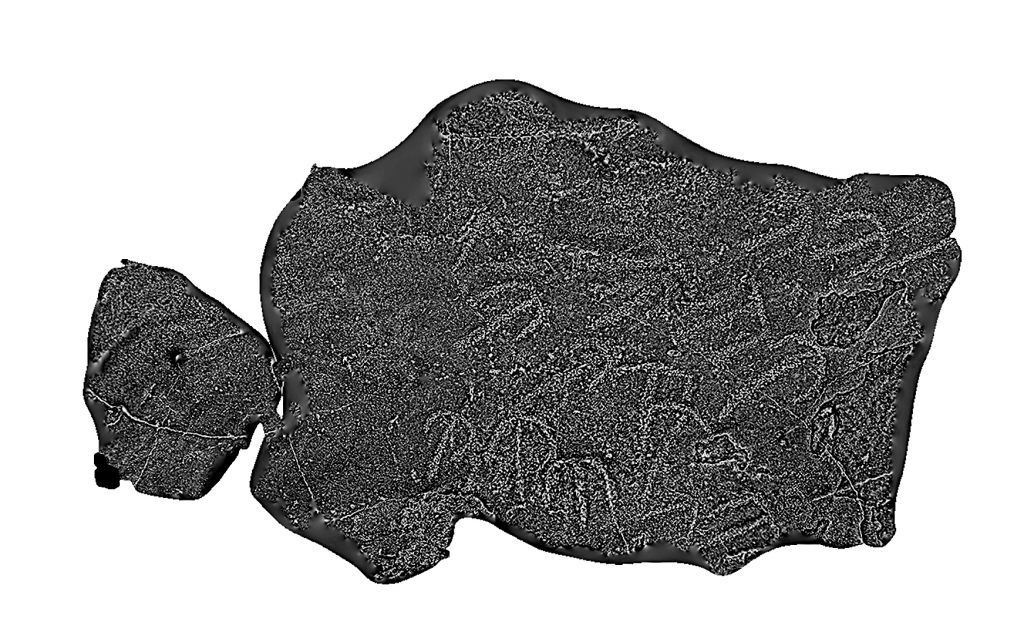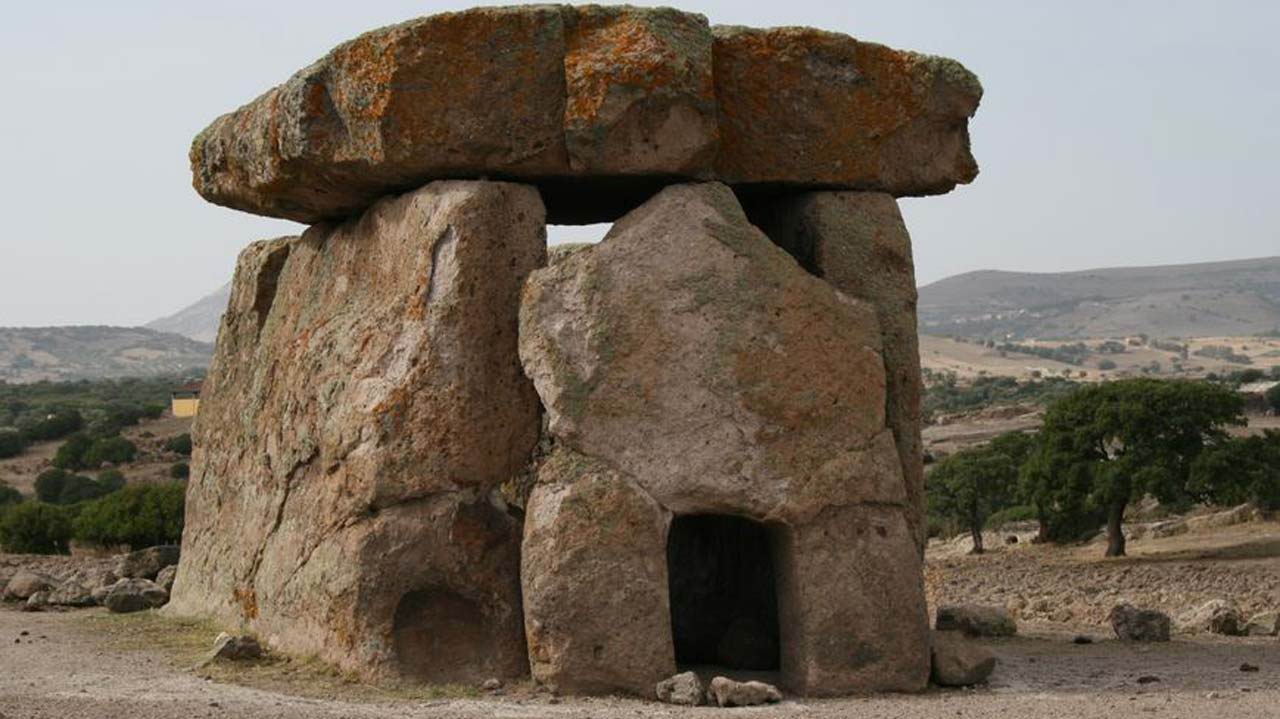Galilee Finding
Giant Dolmen Uncovered at Kibbutz Shamir
Dolmen in the Galilee
Conventional dating of Megalithic Monuments usually places long before the Period after the Exile of the Ten Tribes.
We believe this dating to be mistaken.
Megalithic monuments in Western Europe could not have been constructed at an earlier date than the Late Bronze-Early Iron Ages due to the following reasons.
(a) Population Manpower Requirements. They needed people to erect them and appreciate them. Numbers of people in the quantity required are not believed to have been present at the time given "officially."
(b) Technological Prowess was Needed to put them up. The technical skills and experts along with the economic surpluses necessary to train the prepare the experts were not present as far as we know.
(c) Archaeological Findings Have been found indicating Late Bronze and Iron Age Construction
(d) Length of Year Changes took place but Astronomical Alignments are in Accordance wit h the Present Calendar. Many megalithic monuments are in line with astronomical phenomena as we now known them but previously the alignments would have been different.
(e) Biblical Indications indicate that Hebrews from the Ten Tribes were responsible for many of the megalithic monuments.
The dolmen field in Kibbutz Shamir in the Galilee near the border with Israel has always been known about. Recently however the largest dolmen, amongst many, has been excavated. The findings are both impressive and surprising.
We hope to write a proper description and discussion concerning this. For the present it is worthwhile just quoting excerpt from a few of the Press reports and showing a few of the pictures.
^^^^^^^^^^^^^^^^^^^^^^^^^^^^^^^^^^^^^^^^^^^^^^^^^^^
Massive 4,000-year-old Galilee tombs force rethink of Bronze dark age
In northern Israel, archaeologists excavate largest dolmen in the Levant, with 50-ton stones to rival those of Stonehenge in size
By ILAN BEN ZION5 March 2017, 4:39 pm7
https://www.timesofisrael.com/massive-4000-year-old-boulder-tombs-force-rethink-of-bronze-dark-age/
Extracts:
The excavation of the dolmens, near Kibbutz Shamir in the Hula Valley... commenced after Gonen Sharon, a professor at Tel Hai College and lead author of the study, discovered the rock drawings in 2012. The field was first surveyed in the 1950s.
Dolmens lie scattered throughout the Golan Heights, and appear in Lebanon, Syria and Turkey. A recent survey of the Golan Heights turned up over 5,200 of the monumental rock tombs; the Shamir Dolmen Field has over 400.
'The largest of the Shamir dolmens and, to our knowledge, one of the largest dolmens ever reported from the Levant, is Dolmen 3.'
The boulder capping the grave is over 13 feet long and nearly as wide, is just shy of four feet thick and weighs over 50 tons...
On the underside of Dolmen 3's titanic slab were 14 etchings hewn into the volcanic rock, all variations on a unique motif: a vertical line with an arc at one end, each around 10 inches long.
As author Bill Bryson pointed out with Stonehenge,
"Can you imagine trying to talk six hundred people into helping you drag a fifty-ton stone eighteen miles across the countryside and muscle it into an upright position, and then saying, 'Right, lads! Another twenty like that, plus some lintels and maybe a couple of dozen nice bluestones from Wales, and we can party!' Whoever was the person behind Stonehenge was one dickens of a motivator, I'll tell you that."
The same goes with the dolmen fields in the Galilee and Golan.
"Even though we don't have any regular archaeological evidence, like cities and towns and tels, it doesn't mean there's nothing here," said Sharon. The Mongol Empire, the largest land empire in history, was forged by tent-dwellers who left little trace, he argued.
"Dolmens suggest we're looking at a much more complex governmental system. To build this kind of dolmen you have to gather enough people, you have to feed these people, you have to accommodate these people, you have to have the architectural and construction knowledge, and you must have a boss. Somebody needs to tell them what to do."


^^^^^^^^^^^^^^^^^^^^^^^^^^^^^^^^^^^^^^^^^^^^^^^^^^^
Israeli Archeologists Discovers Bronze Age Dolmen In The Galilee Hills
By Ayola.Tv Staff
https://www.ayola.tv/israeli-archeologists-discovers-bronze-age-dolmen-in-the-galilee-hills/
Israeli archeologists have discovered a peculiar Bronze Age dolmen in the Galilee hills, the Israel Antiquities Authority said on Sunday.
An IAA statement said that the capstone of the basalt chamber weighed a whopping 50 tonnes and its underside bore about 15 intricate carved designs.
"This is the first art ever documented in a dolmen in the Middle East," the authority quoted Uri Berger, one of its archaeologists, as saying. "The engraved shapes depict a straight line going to the centre of an arc," Berger said.
It added that the scale of building would have required a large amount of manpower that must have been housed and fed during construction, but said much remains unknown.
^^^^^^^^^^^^^^^^^^^^^^^^^^^^^^^^^^^^^^^^^^^^^^^^^^
Mysterious, Ancient Stone Monument Unearthed in Galilee [PHOTOS]
By Andrew Friedman
https://www.breakingisraelnews.com/84590/mysterious-ancient-stone-engraving-unearthed-galilee/
According to the Israel Antiquities Authority, the dolmen was discovered inside a large chamber measuring 2 by 3 meters, and was covered by an enormous stone estimated to weigh at least 50 tons, one of the largest stones ever used in the construction of dolmens in the Middle East. The dolmen itself was enclosed in an enormous stone heap (tumulus) approximately 20 meters in diameter, and its stones are estimated to weigh a minimum of 400 tons. At least four smaller dolmens that were positioned at the foot of the decorated dolmen were identified inside the stone heap.
^^^^^^^^^^^^^^^^^^^^^^^^^^^^^^^^^^^^^^^^^^^^^^^^^^
Monumental megalithic burial and rock art tell a new story about the Levant Intermediate Bronze "Dark Ages"
https://journals.plos.org/plosone/article?id=10.1371/journal.pone.0172969
Gonen Sharon, Alon Barash, Davida Eisenberg-Degen, Leore Grosman, Maya Oron, Uri Berger
Shamir Dolmen 3 is surrounded by a large concentration of dolmens that, while smaller in size, are also huge structures that required social organization, knowledge, and labor for their building. Moreover, while rock art has been documented in European dolmens and megalithic structures, no rock art has previously been reported from dolmens in the Southern Levant [3]. It is notable that the only such rock art reported in the region to date is found in the largest and most complex structure of the Shamir Dolmen Field. This finding is an additional indicator for the complex and advanced praxis associated with these dolmens.
The Shamir Dolmen Field comprises hundreds of dolmens, most of which were built using uniform architecture: a central rectangular chamber surrounded by a well-built circular tumulus, covered by a giant capstone visible from afar. This uniformity suggests a cultural pattern that was practiced over a significant period of time. The Shamir Dolmen Field is not the only monumental megalithic structure of the Golan. Thirty km to the southeast is the famous Rujm el Hiri monument [45]. The chronology and function of this megalithic circle, with a diameter of 160 meters, are still under debate [9]. Similar to the Shamir Dolmen Field, Rujm el Hiri is a monumental structure, surrounded by additional megalithic structures overlooking it from the surrounding hills, with no significant settlement system in the vicinity. It is evident that the Rujm el Hiri megalithic 'tradition' is similar, yet not identical, to the Shamir dolmen megalithic tradition.
^^^^^^^^^^^^^^^^^^^^^^^^^^^^^^^^^^^^^^^^^^^^^^^^^^
Check:
Fraser JA. Dolmens in the Levant. University of Sydney; 2015.
